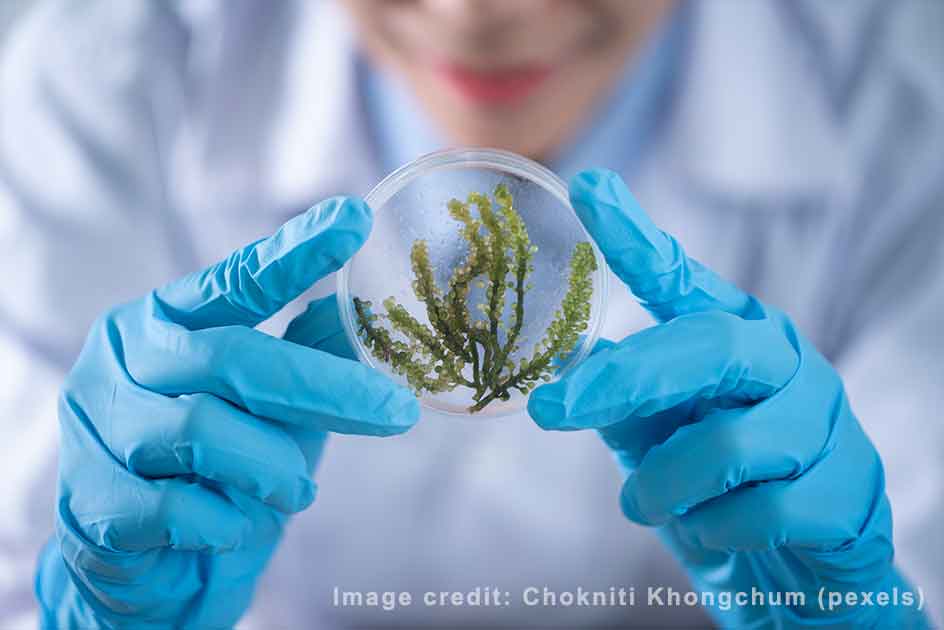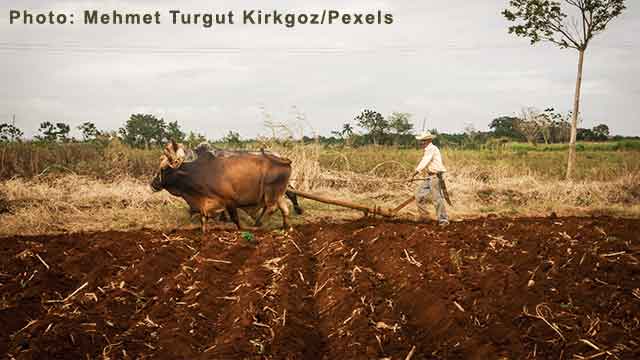The world has witnessed a significant disruption in recent years due to the COVID-19 pandemic. This crisis has highlighted the need for global resilience, not just in healthcare systems but also in various aspects of society. One crucial aspect that has gained prominence is sustainability. Building resilience for future pandemics is not just about preparing for the medical aspects but also ensuring the sustainability of our environment, economies, and communities.
The Interconnectedness of Sustainability and Resilience
Sustainability and resilience are intrinsically interconnected. Sustainability, in its essence, is about maintaining a balance that allows our planet and society to thrive over the long term. Resilience, on the other hand, is the capacity to withstand and recover from shocks and disturbances. These two concepts go hand in hand when it comes to preparing for future pandemics.
Healthcare Infrastructure: Sustainable healthcare systems are more resilient. Sustainable practices, such as efficient resource management and environmentally friendly healthcare facilities, not only reduce the carbon footprint but also ensure that healthcare institutions are better prepared to handle crises. For example, energy-efficient hospitals with renewable energy sources can continue to function during power outages, ensuring uninterrupted patient care during a pandemic.
Food Security: Sustainable agriculture practices, such as regenerative farming and diversified food sources, contribute to food security. When a pandemic disrupts global supply chains, locally sustainable food production ensures that communities have access to essential nutrition. Additionally, sustainable agriculture preserves biodiversity, reducing the risk of zoonotic diseases, which can be a source of pandemics.
Economic Resilience: Sustainable economies are more resilient. Diversified economies that do not overly rely on a single industry or global supply chains are better equipped to weather economic shocks. Sustainable businesses that prioritize environmental and social responsibility are also more likely to adapt to changing circumstances.
Community Well-being: Strong, connected communities are essential for resilience. Sustainable communities foster social cohesion, making it easier for people to come together and support each other during a crisis. Initiatives like community gardens and renewable energy cooperatives not only promote sustainability but also strengthen community bonds.
Environmental Protection: Sustainable environmental practices mitigate the risk of pandemics. Deforestation and habitat destruction can lead to the displacement of wildlife, increasing the chances of zoonotic disease transmission. Sustainable land use and conservation efforts are critical for preventing future pandemics.
Building Sustainable Resilience
Building resilience for future pandemics requires a multifaceted approach that incorporates sustainability into every aspect of our lives:
I) Green Healthcare:
The COVID-19 pandemic has been a global wake-up call, underscoring the need for increased resilience in healthcare systems. Building this resilience goes beyond stockpiling medical supplies and improving response protocols; it extends to adopting sustainable and eco-friendly practices, often referred to as “green healthcare.”

The Foundations of Green Healthcare
Green healthcare is a holistic approach that integrates environmental sustainability into the entire healthcare ecosystem, from the construction and operation of healthcare facilities to patient care and medical research. This approach recognizes the interconnectedness of healthcare and the environment, emphasizing the following key principles:
Energy Efficiency: Green healthcare facilities are designed to be energy-efficient. They incorporate sustainable building materials, utilize natural light, and implement energy-efficient HVAC systems. These features not only reduce greenhouse gas emissions but also make healthcare facilities more resilient during power outages, crucial during pandemics.
Renewable Energy: Transitioning to renewable energy sources, such as solar and wind power, reduces reliance on fossil fuels and contributes to a cleaner environment. Hospitals and medical centers that generate their own renewable energy can maintain operations even during energy crises.
Reducing Waste: Green healthcare facilities prioritize waste reduction and recycling. By minimizing single-use plastics and implementing waste reduction measures, they not only reduce the environmental impact but also help manage the increased waste generated during a pandemic.
Resilient Infrastructure: Building green healthcare facilities with resilient infrastructure, including backup power systems and water storage, ensures that critical medical services remain available during natural disasters or emergencies like pandemics.
Green Procurement: Procuring sustainable and environmentally-friendly products and medications minimizes the ecological footprint of healthcare operations. Sustainable procurement practices can also help ensure a consistent supply of essential medical resources during crises.
The Role of Green Healthcare in Pandemic Resilience
Energy Independence: Hospitals and medical facilities that invest in renewable energy sources become less vulnerable to energy disruptions. During pandemics, when power grids may be under strain, these facilities can continue to operate effectively.
Resource Efficiency: Green healthcare practices often involve the efficient use of resources like water and electricity. During a pandemic, when resources may be scarce, efficient healthcare facilities can allocate resources more effectively, ensuring that critical patients receive the care they need.
Reduced Carbon Footprint: The reduction of carbon emissions through green healthcare practices not only contributes to a healthier planet but also helps mitigate climate change-related health risks, which can exacerbate pandemics.
Community Health: Green healthcare extends beyond the walls of medical facilities. Encouraging sustainable practices in healthcare can also promote community health, creating a more resilient population better equipped to combat pandemics.
Research and Innovation: Green healthcare often encourages research into eco-friendly medical technologies and practices. This research can lead to innovative solutions that improve patient care and pandemic response
II) Local Food Production:
The COVID-19 pandemic has revealed the vulnerability of global food supply chains, emphasizing the importance of building resilience in our food systems. One effective strategy to achieve this resilience is to promote and invest in local food production.

The Fragility of Global Food Supply Chains
The pandemic disrupted global food supply chains in several ways:
Transportation Disruptions: Lockdowns and travel restrictions led to transportation disruptions, causing delays in the delivery of food products.
Labor Shortages: Outbreaks in food processing facilities and farms resulted in labor shortages, impacting production and harvest.
Supply Chain Complexity: Complex supply chains involving multiple countries made it challenging to adapt quickly to changing circumstances.
Food Security Concerns: Vulnerabilities in the global food supply raised concerns about food security, particularly in regions heavily reliant on imports.
Building Resilience through Local Food Production
Reducing Supply Chain Vulnerability: Local food production shortens supply chains, making them less susceptible to disruptions caused by pandemics or other crises. Shorter supply chains can respond more rapidly to changing conditions, ensuring that food continues to reach local communities.
Food Security: Investing in local agriculture ensures a more reliable source of food for communities. It reduces the risk of food shortages during pandemics or other emergencies, providing essential sustenance for residents.
Supporting Small-Scale Farmers: Local food systems often involve small-scale and family-owned farms. Supporting these farmers not only promotes economic resilience but also helps maintain agricultural diversity, reducing the risk of monocultures that are susceptible to diseases.
Community Resilience: Local food production fosters community resilience by creating stronger connections between consumers and producers. This sense of community can lead to mutual support during crises.
Reducing Carbon Footprint: Local food production typically has a lower carbon footprint compared to long-distance transportation of food. Reducing carbon emissions contributes to environmental resilience and mitigates climate change, which can exacerbate health crises.
Challenges and Solutions
While local food production offers numerous benefits for building resilience, several challenges need to be addressed:
Infrastructure and Technology: Investment in local infrastructure and technology is essential to enhance the efficiency and productivity of local farming. This includes access to modern farming equipment and facilities.
Education and Training: Providing education and training to farmers on sustainable and resilient farming practices is crucial for improving crop yields and food quality.
Market Access: Farmers need access to local markets and consumers. Initiatives like farmers’ markets, community-supported agriculture (CSA), and online platforms can help bridge this gap.
Policy Support: Governments can play a significant role by implementing policies that support local food production, such as providing subsidies, grants, or tax incentives to local farmers.
III) Diverse Economies:
The COVID-19 pandemic has revealed the vulnerabilities of economies heavily reliant on single industries or global supply chains. To build resilience for future pandemics, it is crucial to promote diverse economies that are capable of withstanding shocks and disruptions.
The Vulnerability of Monoculture Economies
Economies that rely heavily on a single industry or sector are particularly susceptible to crises, such as pandemics:
Supply Chain Disruptions: Global supply chains can easily break down during pandemics, disrupting manufacturing and trade, which many monoculture economies heavily depend on.
Labor Market Vulnerability: When a crisis severely impacts a specific sector, such as tourism or hospitality, job losses and economic instability can follow.
Dependence on Imports: Economies relying on imports for essential goods, including medical supplies and food, are exposed to risks when global trade is disrupted.
Economic Contraction: The sudden and sharp decline in economic activity during pandemics can have cascading effects on local businesses, leading to closures and job losses.
Building Resilience through Diverse Economies
Economic Stability: Diverse economies are more stable and can better absorb shocks. A mix of industries, including agriculture, manufacturing, technology, and services, helps cushion the impact of crises on overall economic performance.
Job Retention and Creation: A diverse economy supports job retention and creation, as workers can transition to different sectors during times of crisis. This reduces unemployment and mitigates social and economic instability.
Local Resilience: Local businesses and industries within diverse economies are better equipped to adapt to changing circumstances. They can pivot production to meet urgent needs during a pandemic, such as producing personal protective equipment or medical supplies.
Supply Chain Shortening: Diverse economies often feature shorter and more localized supply chains. This can be advantageous during crises, as it reduces the risk of supply chain disruptions affecting critical goods and services.
Innovation and Adaptation: A diverse economy encourages innovation and adaptation, fostering the development of new industries and technologies that can aid in pandemic response and recovery.
Challenges and Solutions
Transitioning to diverse economies comes with its own set of challenges:
Economic Transformation: Shifting from a monoculture economy to a diverse one may require substantial economic transformation, which can be challenging and time-consuming.
Educational and Training Programs: Preparing the workforce for diverse industries may necessitate investments in education and training programs that teach relevant skills.
Policy Support: Government policies can play a pivotal role in promoting diverse economies. Incentives, subsidies, and regulations can encourage the growth of various industries.
Community Engagement: Local communities must be actively engaged in the transition, as they often play a crucial role in supporting and sustaining diverse economies.
IV) Community Engagement:
The COVID-19 pandemic has emphasized the critical role of community engagement in building resilience for future pandemics. Communities are the frontlines of defense against health crises, and active participation, communication, and cooperation are essential to prepare for and respond to future challenges.

The Power of Community Engagement
Early Warning Systems: Engaged communities are more likely to establish effective early warning systems. When community members are informed and motivated, they can recognize potential health threats and take swift action to mitigate them.
Behavioral Change: Community engagement promotes positive behavioral change. Through education and awareness campaigns, communities can adopt protective behaviors like mask-wearing, hand hygiene, and social distancing, reducing the spread of infectious diseases.
Resource Mobilization: Engaged communities can mobilize resources quickly and effectively. During pandemics, community-driven initiatives can provide support to vulnerable members, such as the elderly or those with limited access to healthcare.
Local Healthcare Infrastructure: Community involvement can bolster local healthcare infrastructure. Volunteer efforts, community clinics, and the sharing of medical knowledge can strengthen the capacity of healthcare systems.
Trust and Solidarity: Active community engagement fosters trust and solidarity. In times of crisis, trust between community members and health authorities is vital for efficient response efforts.
Building Resilience through Community Engagement
Education and Awareness: Community engagement starts with education and awareness campaigns. Informing communities about the risks of pandemics, preventive measures, and how to access healthcare services is essential.
Collaborative Planning: Engaging communities in pandemic preparedness planning ensures that local needs and concerns are considered. Community members can provide valuable input on strategies and resources needed for a resilient response.
Communication Channels: Establish effective communication channels between health authorities and communities. This can include regular updates, emergency contact information, and feedback mechanisms to address community concerns.
Resource Sharing: Encourage communities to share resources and knowledge. This can include setting up neighborhood support networks, distributing information, and pooling resources for healthcare supplies.
Mental Health Support: Recognize the importance of mental health during pandemics. Community-based mental health services and support groups can be essential for resilience.
Challenges and Solutions
Despite the many benefits of community engagement, several challenges must be addressed:
Inclusivity: Ensure that community engagement is inclusive and represents all segments of the population, including vulnerable and marginalized groups.
Access to Information: Ensure that communities have access to accurate and timely information, especially in regions with limited connectivity.
Cultural Sensitivity: Respect cultural norms and beliefs when implementing engagement strategies to build trust and promote cooperation.
Resource Allocation: Allocate resources to support community engagement efforts, including funding for education campaigns, training, and community-led initiatives.
V) Environmental Conservation:
The COVID-19 pandemic has starkly highlighted the interconnectedness of human health and the environment. As we confront the challenges of the future, it is increasingly evident that building resilience for pandemics requires a strong commitment to environmental conservation.

The Pandemic-Environment Nexus
Zoonotic Diseases: Many pandemics, including COVID-19, originate from the transmission of pathogens from animals to humans. Environmental degradation, habitat loss, and wildlife trafficking increase the risk of zoonotic diseases.
Air Quality and Respiratory Health: Poor air quality, often a result of pollution, has been linked to respiratory illnesses. During pandemics, respiratory health becomes paramount, making clean air essential for recovery.
Climate Change Amplification: Climate change, driven by environmental degradation, can exacerbate health crises. Extreme weather events, food and water scarcity, and the spread of infectious diseases are all linked to climate change.
Biodiversity Loss: Loss of biodiversity reduces the resilience of ecosystems, making them more susceptible to disease outbreaks. Diverse ecosystems are often more stable and less prone to the proliferation of pathogens.
Building Resilience through Environmental Conservation
Preventing Zoonotic Spillover: Conservation efforts that protect natural habitats and regulate wildlife trade can reduce the likelihood of zoonotic disease spillover. Preserving biodiversity helps maintain ecosystem health, reducing the risk of novel pathogens.
Promoting Clean Energy: Transitioning to clean and renewable energy sources reduces air pollution, enhancing respiratory health and decreasing vulnerability to respiratory diseases during pandemics.
Sustainable Agriculture: Encouraging sustainable agricultural practices can ensure food security while minimizing environmental damage. Agroecology and organic farming methods support both human health and the environment.
Resilient Ecosystems: Investing in the restoration and conservation of ecosystems, such as wetlands and forests, can help buffer the impacts of pandemics by maintaining ecological resilience.
Climate Mitigation and Adaptation: Addressing climate change through conservation and emissions reduction strategies is essential for preventing climate-related health crises.
Challenges and Solutions
While the benefits of environmental conservation for pandemic resilience are evident, several challenges need to be addressed:
Resource Allocation: Adequate funding and resources are required for conservation efforts, which may compete with other immediate priorities during pandemics.
Political Will: Political commitment to environmental conservation may vary. Advocacy and public pressure are essential for pushing governments to prioritize conservation.
Behavioral Change: Encouraging sustainable behaviors, such as reducing waste and conserving resources, requires comprehensive education and awareness campaigns.
Equity: Conservation policies must be equitable and consider the rights and needs of local communities, especially in vulnerable regions.
FAQ’s:
-
How does environmental conservation relate to building resilience for future pandemics?
Environmental conservation helps prevent zoonotic diseases, maintains clean air quality, and reduces climate change impacts, all of which enhance our ability to respond to pandemics effectively.
-
Can conservation efforts reduce the risk of future zoonotic disease outbreaks?
Yes, conserving natural habitats and regulating wildlife trade can lower the chances of zoonotic spillover events, protecting both human health and biodiversity.
-
How does environmental conservation contribute to respiratory health during pandemics?
Promoting clean energy and reducing pollution through conservation measures leads to cleaner air, supporting better respiratory health, especially in times of health crises.
-
Can biodiversity loss affect the resilience of ecosystems during pandemics?
Yes, loss of biodiversity weakens ecosystems, making them more vulnerable to disease outbreaks. Diverse ecosystems are more stable and less conducive to pathogen proliferation.
-
How can sustainable agriculture aid in pandemic resilience?
Sustainable agricultural practices ensure food security while minimizing environmental harm. This supports both human health and ecosystem integrity during pandemics.
-
Why should governments prioritize conservation, especially during health crises like pandemics?
Environmental conservation is not just about protecting nature; it’s about safeguarding human health and well-being. Prioritizing conservation reduces the risks of future pandemics and climate-related health crises while promoting resilience for all.
